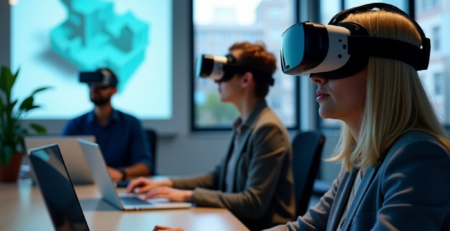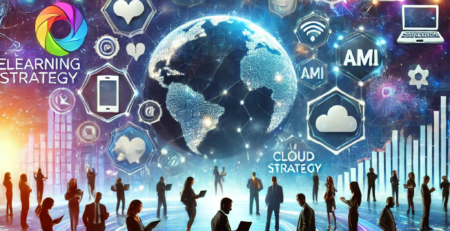How VR and AR Enhance Immersive Learning Experiences
In today’s rapidly evolving digital landscape, immersive learning technology is transforming the educational experience. Virtual Reality (VR) and Augmented Reality (AR) are at the forefront of this transformation, offering innovative solutions in eLearning and digital learning environments. By integrating these technologies, educators can create more engaging and effective learning experiences that cater to diverse learning needs.
Table of Contents
- What Are VR and AR?
- Transforming eLearning with Immersion
- Benefits of VR and AR in Digital Learning
- Custom eLearning Through VR and AR
- The Future of Immersive Learning
- Conclusion
What Are VR and AR?
Virtual Reality (VR) is a computer-generated simulation of a three-dimensional environment that can be interacted with through special equipment, such as VR headsets. It immerses users in a completely artificial world, allowing them to explore and interact within the digital space.
In contrast, Augmented Reality (AR) overlays digital content onto the physical world, enhancing what we see, hear, and even feel. With the use of devices such as smartphones or AR glasses, users can interact with digital elements while staying grounded in their real-world surroundings.
Transforming eLearning with Immersion
Incorporating VR and AR into eLearning platforms provides a multisensory experience that is far more engaging than traditional methods. Learners can explore topics from a first-person perspective, which is particularly beneficial for complex subjects.
Interactive Simulations
- Science students can conduct virtual lab experiments.
- Medical trainees can practice surgeries in a risk-free environment.
- Engineers can test prototypes through simulated construction tasks.
These interactive experiences foster a deeper understanding of material, as learners are actively participating rather than passively consuming information.
Benefits of VR and AR in Digital Learning
Integrating VR and AR in digital learning can lead to better outcomes through increased engagement and improved knowledge retention. Here are some key benefits:
- Enhanced Engagement: Immersive environments capture learners’ attention and maintain their interest.
- Improved Retention: Interactive and practical learning experiences help solidify understanding and memory recall.
- Personalized Learning: Learners can progress at their own pace, receiving customized support and feedback as needed.
- Accessibility and Inclusivity: These technologies cater to various learning styles and can be adapted for learners with different abilities.
Custom eLearning Through VR and AR
Creating a personalized learning experience is now achievable through custom eLearning solutions powered by VR and AR. This approach allows educators to develop tailored content that addresses specific goals and challenges faced by learners.
Through custom digital learning solutions, institutions can:
- Develop adaptive learning paths.
- Incorporate real-world scenarios and problem-solving tasks.
- Utilize data-driven insights to refine educational strategies.
For more insights on how custom eLearning can benefit your organization, explore our comprehensive guides and articles.
The Future of Immersive Learning
The future of education lies in immersive technologies, with VR and AR leading the charge. As these technologies continue to evolve, the potential for even more dynamic and effective learning experiences will expand. Upcoming advancements in hardware and software are expected to make these technologies more accessible and affordable, paving the way for widespread adoption.
Conclusion
As we look to the future, the role of VR and AR in enhancing immersive learning experiences is undeniable. Their ability to transform eLearning and digital learning environments sets the stage for a new era of education. Whether you’re an educator looking to integrate these technologies or a learner eager to explore new ways of engaging with content, the opportunities are endless.
We’d love to hear how you’re using or plan to use VR and AR in your educational journey. Share your thoughts and experiences in the comments below!












Leave a Reply